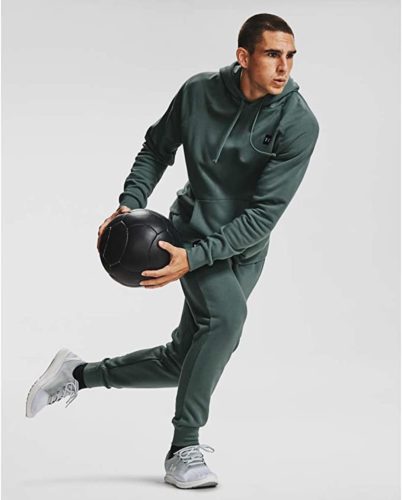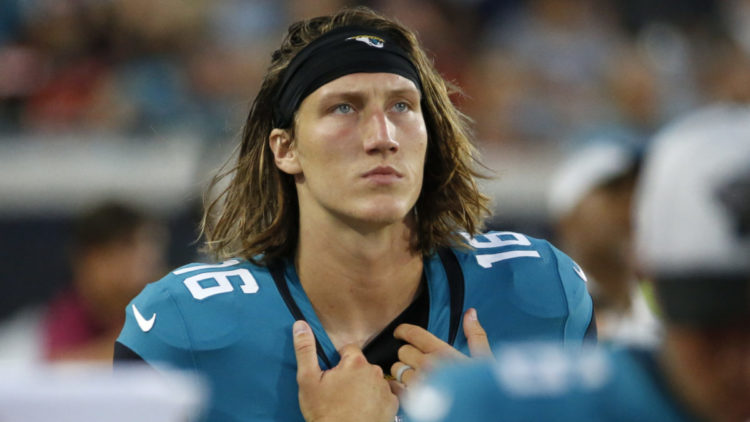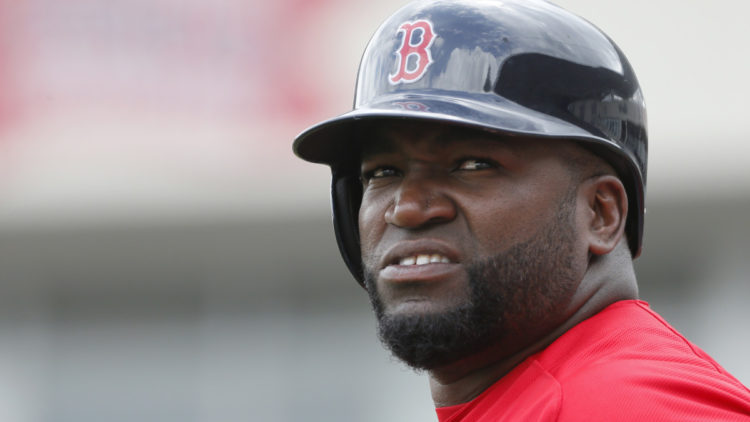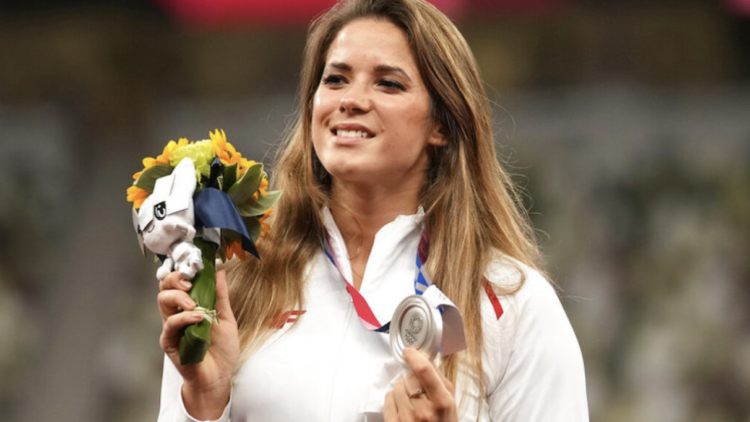Groundbreaking sports figures that time has forgotten
Throughout sports history, some athletes have endured a much tougher road than others.
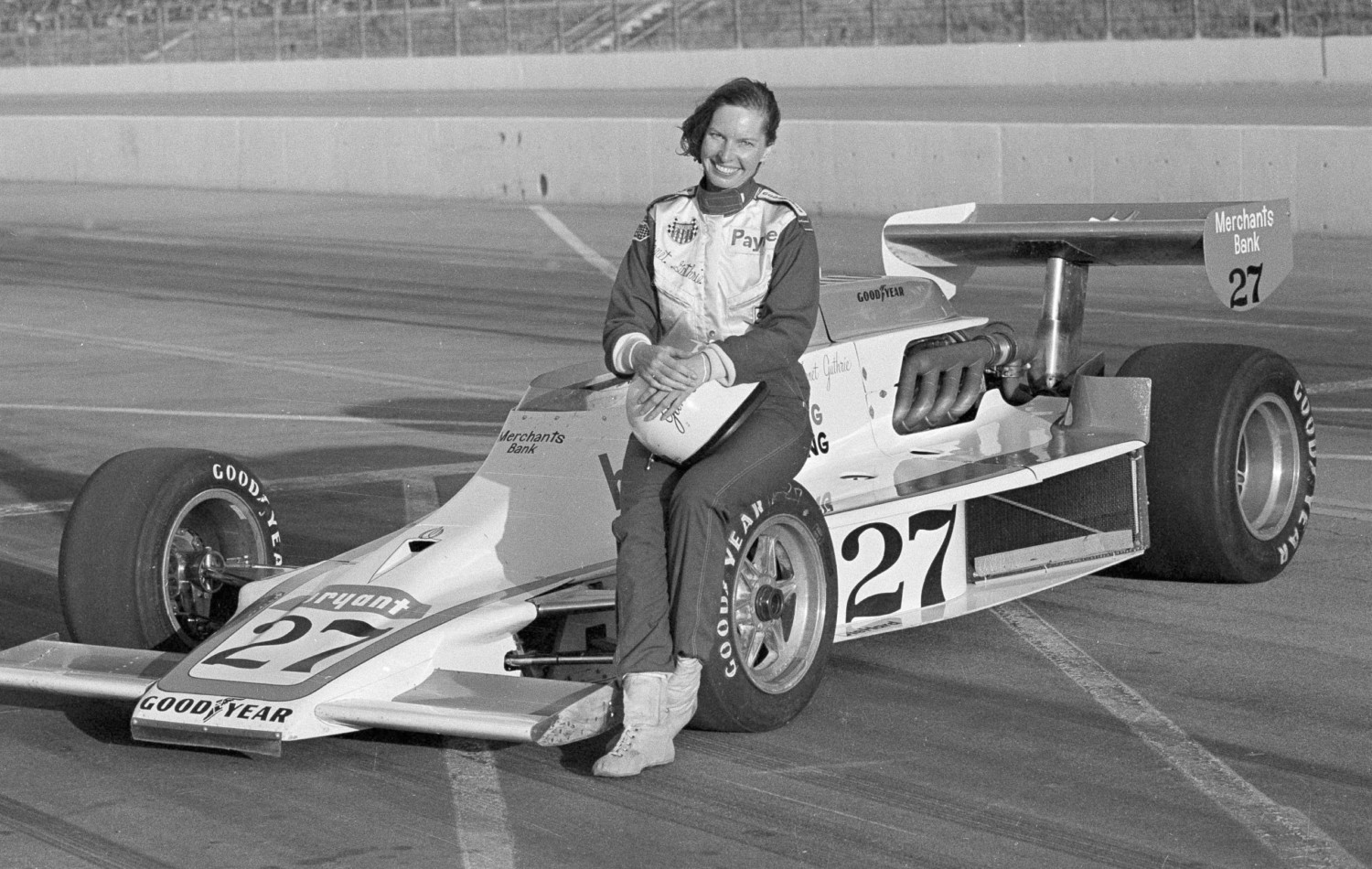
Throughout sports history, some athletes have endured a much tougher road than others. The groundbreaking figures who broke down boundaries to make athletics the diverse place they are today were faced with endless negativity, taunting and threats for simply trying to do what they were great at.
America celebrates giants like Jackie Robinson, Jesse Owens and Jack Johnson for their immense work in paving the way for future athletes of color, but many other pioneers aren’t celebrated nearly enough. Here are some lesser-known groundbreaking sports figures that shouldn’t be overlooked.
Glenn Burke
Former big leaguer Glenn Burke is credited with inventing the high-five — but that’s not why he was a groundbreaker. He is widely regarded as the first openly gay player in MLB history. The outfielder, who played for the Dodgers and Athletics in the late 1970s, came out to his teammates and front-office figures while he was playing, which unfortunately caused him some issues in the club house. Openly gay athletes in men’s professional sports are still a rarity more than 40 years after Burke’s premature retirement, which came about partly because of the prejudice he faced.
Earl Lloyd
Perhaps more than any other major sports league in North America, the NBA has embraced Black culture as part of its identity. So it’s hard to imagine a time when there were no players of color in the league, but that was the case until 1950. That’s when Earl Lloyd broke the NBA’s color barrier by entering a game for his Washington Capitols. Two other Black players were debut on NBA rosters later that season, following in Lloyd’s wake and helping to pave the way for today’s diverse game.
Lloyd made further history in 1955, when he won a championship with the Syracuse Nationals (now the Philadelphia 76ers), making him and teammate Jim Tucker the first Black players to win an NBA title.
Lou Castro
Just like it’s tough to picture the NBA without Black players, it’s impossible to imagine today’s MLB without Latino players. The great tradition of Latino big leaguers began with Lou Castro, who is pictured on the left here with some of his Philadelphia Athletics teammates. Castro made his MLB debut in 1902 — nearly 50 years before Jackie Robinson would break the color barrier. He was born in Colombia and had lived in America since he was 8 years old, picking up baseball as a teenager.
Castro’s MLB career only lasted for 42 games but he had a .245 average and helped the Athletics win the American League pennant.
Ann Gregory
In the mid-1950s, top-level golf was still firmly considered a white person’s sport — largely because of prejudicial rules and bylaws that kept non-white players from participating. Ann Gregory knocked down doors for other players of color in women’s golf.
In 1956, she entered the prestigious U.S. Women’s Amateur Championship, making her the first Black woman to compete in a national championship tournament hosted by the U.S. Golf Association.
Janet Guthrie
Decades before Danica Patrick became an international motorsports icon, Janet Guthrie was paving the road for her. Guthrie left her career as a pilot and aeronautical engineer in 1972 for a full-time career in auto racing. She was the first woman to ever qualify for and start in the Indianapolis 500, which she first did in 1977. That same year, she also became the first woman to start in NASCAR’s Daytona 500, where she finished 12th.
Guthrie ended up finishing ninth in the Indianapolis 500 in 1978 while driving with a broken wrist that she kept hidden from race officials.
Hisako Higuchi
Asian-born players are some of the most towering figures in women’s golf today but there was a time when they were still considered a novelty in LPGA Tour events. Hisako Higuchi, also known by her nickname, “Chako,” helped usher in the era of dominance by women from her part of the world in the 1970s. At the 1977 LPGA Championship, Higuchi became the first Asian-born player of any gender to win a major golf championship in America.
In her native Japan, her legacy is far from overlooked — but the fact that she’s still the only golfer from that country to win an American major should be more common knowledge everywhere.
Kenny Washington
Football history is filled with the achievements of legendary Black players but Kenny Washington’s name isn’t as celebrated as it should be. He broke the NFL’s color barrier in 1946, a year before Jackie Robinson did it in baseball. Washington’s historic contract with the Los Angeles Rams came well after it should have, simply because of the league’s racist practices at the time.
He was a brilliant college running back who led the nation in total yards at UCLA in 1939 but no NFL team would dare sign him until 1946, making his on-field figures less impactful than they should’ve been, since he would retire in 1948 due to knee injuries.
Willie O’Ree
Speaking of color-barrier breakers, the NHL had its own in the form of Willie O’Ree. While ice hockey is still not a sport that’s known for having many players of color, O’Ree laid the groundwork for the others who’ve followed him in the past few decades. The Canadian-born hockey player made NHL history in 1958, when he was called up from the minor leagues by the Boston Bruins to replace an injured player. O’Ree has said he didn’t even know he was the first Black player to compete in an NHL game until he read about it in the newspaper the following day.
Masanori Murakami
Japan is known for its national love of baseball, and the country has given Americans some all-time great MLB players. That pipeline started in 1964, when Masanori Murakami started playing for the San Francisco Giants. He was the first Japanese player to appear on an MLB roster, working out of the Giants’ bullpen for two seasons. Blessed with a nasty curveball, Murakami recorded a 5-1 record and a 3.43 earned run average in his MLB career, which only lasted for 54 appearances.
Despite the brevity of his career, Murakami was regarded as a legend in his native country.
Charlie Sifford
The PGA Tour didn’t allow non-white golfers to compete in its ranks until 1961, making it arguably the last of the major American sports organizations to integrate. When they got rid of that racist rule, Charlie Sifford was there to break down the door with his signature cigar in hand. A U.S. Army veteran, Sifford apparently once told Jackie Robinson he would break golf’s color barrier and that’s exactly what he did. He eventually won two PGA Tour events and became the first Black person enshrined in the World Golf Hall of Fame.
Ann Meyers-Drysdale
Ann Meyers-Drysdale shattered several glass ceilings that had been constructed over women who wanted to play team sports. In 1974, she became the first woman to ever get a four-year athletic scholarship to an American university when she signed to play for the then-new UCLA Bruins women’s basketball program. She was so good in college that the NBA’s Indiana Pacers invited her to try out for the team in 1979, where she reportedly outperformed many men who had also been invited.
Meyers-Drysdale didn’t make the roster but she made NBA history that day by even trying out and would make further league history when she became a TV analyst for Phoenix Suns games.
Alice Coachman
Students in Albany, Georgia attend Alice Coachman Elementary School, but many other people around the country have probably never even heard of this trailblazer. In 1948, Coachman, who was born in that city, became the first Black woman to win a gold medal at the Olympics. She set a new world record in the high jump while earning her gold medal — all while battling a back injury — and became the only American woman to get gold at the games that year.
Back home, Coachman was received as a hero and made more history when she signed a deal with Coca-Cola and became the first Black woman athlete to endorse an international consumer product.
Larry Doby
Everyone knows about Jackie Robinson but knowledge of Larry Doby’s accomplishments seems limited to baseball nerds. Just 11 weeks after Robinson broke the MLB color barrier by playing in a National League game, Doby broke the color barrier in the American League. The Cleveland Indians outfielder went through all the same racist blowback that his NL counterpart did, but to much less media fanfare.
Doby ended up becoming the first Black player to hit a home run in the World Series in 1948 and the first to lead either league in home runs after hammering 32 of them that season. He’s now got a place in the Baseball Hall of Fame.
Manon Rheaume
While racial and ethnic boundaries have largely all been shattered across professional sports by now, gender boundaries remain pretty firm. One of the few exceptions came in 1992, when Manon Rheaume became the first woman to play in any of the four major North American pro sports leagues.
The Quebec native, who was just 20 years old at the time, played goaltender for the NHL’s Tampa Bay Lightning during the first period of an exhibition game. She gave up two goals on nine shots during her time in the net and has continued to inspire women to get into the game in the years since.
Dan Bankhead
Jackie Robinson wasn’t the only Brooklyn Dodgers player to make history during the 1947 season. Not long after he broke the color barrier, the team also added Dan Bankhead to their roster, making him the first Black pitcher in MLB history.
Bankhead made 13 total starts on the mound from 1947-1951, all with the Dodgers, never establishing himself as a great pitcher. He finished his career with a 9-5 record and a 6.52 ERA, but he laid the groundwork for the many legendary Black pitchers who’ve followed.
Jackie Mitchell
The story of Jackie Mitchell is one of those that sounds more like an urban legend than a legitimate piece of sports history. In 1931, she signed a contract to pitch for the minor-league Chattanooga Lookouts at the age of 17, thanks in part to having a great curveball. That’s believed to be the first time a woman signed a professional baseball contract, but it’s not the craziest part of Mitchell’s tale.
Shortly after signing, the Lookouts hosted the New York Yankees for some exhibition games and she was put on the mound. She faced Babe Ruth and Lou Gehrig in back-to-back appearances — arguably the greatest one-two batting combination in baseball history — and struck them both out!
Diane Crump
Horse racing has long been called the sport of kings — but there have been a few notable queens in its history. Diane Crump was the first woman to crash the boys’ club’s biggest party of the year when she rode a horse during the 1970 Kentucky Derby.
She was riding a major long shot and finished 15th of 17 riders, but it was a monumental occasion that opened the door for other women to compete in horse racing’s premier event. Crump would win more than 200 races in her career as a jockey before retiring.
Lyn St. James
After Janet Guthrie paved the way for women to drive in racing’s top circuits, Lyn St. James put the pedal to the floor in following her. She was a pioneer of IndyCar and separated herself as someone with a need for speed that was matched by few drivers, regardless of gender. In her driving career, she set or broke 21 different speed records recognized by the International Automobile Federation, including a record speed of 212.577 miles per hour around Talladega Superspeedway in 1988.
She also started at the Indianapolis 500 nine times in the 1990s, finishing 11th in 1992 and being named the race’s rookie of the year, despite being 45 years old at the time.
Lizzie Murphy
Rhode Island native Lizzie Murphy earned the nickname “The Queen of Baseball” because of her groundbreaking achievement in the 1920s. She spent the first part of that decade playing first base with a baseball team that would travel around New England and Canada playing as many as 100 games a year for a manager that often refused to pay her. In 1922, Murphy made history as the first woman to play in a game with an MLB club when her team battled the Boston Red Sox in an exhibition.
She didn’t bat in that game but played well in the field and the history books say she once got a hit off of Hall-of-Fame pitcher Satchel Paige in another exhibition match.
Wendell Scott
NASCAR hasn’t exactly earned a reputation as a haven for diversity among its ranks but that only makes the organization’s trailblazers more deserving of respect. Wendell Scott was one such driver, enduring endless prejudice that was even evident in official race results. Scott became the first Black driver to compete in NASCAR in 1953, moving up to the top division in 1961. He broke further ground in 1963, when he won the Jacksonville 200 and became the first Black driver to win a race at NASCAR’s top level.
Race officials may have tried to rob him of that towering achievement, however, as he was initially declared to be the runner-up and wasn’t given his actual result until an alleged clerical error was sorted out.
Babe Didrikson Zaharias
Babe Didrikson Zaharias wasn’t only a groundbreaking figure in golf, she was also easily one of the greatest athletes to ever play the sport. After winning three medals in track and field events at the 1932 Olympics, Zaharias focused her attention on golf and immediately made waves. In 1935, she became the first woman to ever compete at a PGA Tour event and she remains the only one to ever make the cut at such a tournament. When the LPGA Tour launched in 1950, she was a charter member and dominated the first season of its existence.
Buck O’Neil
In 2007, the National Baseball Hall of Fame started giving out a prestigious new honor for the sport’s greatest stewards, dubbed the Buck O’Neil Lifetime Achievement Award. It was some long-overdue mainstream recognition for one of the sport’s greatest pioneers. O’Neil spent his entire playing career in the Negro Leagues and devoted his life to keeping their history alive long after big-league baseball had integrated.
He was a great manager in the Negro Leagues as well, and that experience led him to be added to the coaching staff of the Chicago Cubs in 1962, making him the first Black coach in MLB history.
Hank Greenberg
“Hammerin’” Hank Greenberg is a hero to many Jewish baseball fans, but his legend should be celebrated even more widely by sports fans in general. The Hall-of-Fame first baseman swung one of the most punishing bats in MLB history, leading the AL in home runs and RBIs on four different occasions in the 1930s and ’40s and finishing his career with a lifetime .313 batting average.
Greenberg was the first Jewish athlete to become a superstar in American team sports and his refusal to play in games on Yom Kippur, even in the midst of a pennant race, only made his legend more immense.
Renée Richards
Although much progress has been made to include a diverse range of athletes in many sports, transgender athletes still face a lot of discrimination. Just try to imagine what Dr. Renée Richards went through as she fought for the right to compete with other women in the U.S. Open tennis tournament, about a year after undergoing gender confirmation surgery.
Richards, who was also a practicing ophthalmologist, competed against men in the U.S. Open several times in the 1950s and then successfully lobbied to compete with women in the late 1970s. That made her the first athlete to play in both men’s and women’s events in the prestigious tournament’s long history.
Ashley Martin
The top levels of football are some of the most testosterone-loaded environments in sports but there have been some notable women who’ve competed on the gridiron as well. One such player was Ashley Martin, who made history as part of the Jacksonville State Gamecocks football team. She was a soccer player at the school but had been recruited by the football program for her powerful kicking leg, which they utilized to hit an extra point during a game in 2001.
When Martin nailed the kick, she became the first woman to score a point in an NCAA Division I football game.
Dave Kopay
When Outsports ranked its 100 most important moments in LGBTQ sports history, it had Dave Kopay’s revelation as the top pick. In 1975, Kopay rocked the sports world by coming out as gay about three years after he’d retired from the NFL. He’d spent nine years as a running back for iconic franchises including the 49ers, Packers and Lions, and his announcement made him the first openly gay former NFL player — and one of the first in professional sports in general.
Kopay’s groundbreaking 1977 memoir, in which he publicly came out, became a bestseller.
Minnie Miñoso
Minnie Miñoso has a great following among die-hard Chicago White Sox fans, but many other baseball fans probably don’t even know how much he changed their favorite sport. In 1949, he debuted in MLB and would become the league’s first Black Latino star while playing with the White Sox in the 1950s.
He was Cuban-born and would help establish that small country as one of the greatest contributors of baseball talent in the world. Miñoso played in five different decades before retiring in the 1980s, finishing his MLB career with a lifetime .298 batting average.
Fleet Walker
More than 60 years before MLB’s color barrier was shattered, Fleet Walker may have been the first Black man to play professional baseball. In 1884, Walker made his debut with the Toledo Blue Stockings in the American Association, which was an early forerunner of the American League. As you can imagine, he put up with a lot of hatred during his brief big-league career, which was cut short after 42 games due to an injury. You can see Walker here, in the center of the back row, posing with his Blue Stockings teammates during that historic season.
Tenley Albright
Tenley Albright is another one of those groundbreaking athletes whose story is so inspirational that it’s tough to even believe. After a battle with polio that greatly affected her muscles, she got into figure skating as a way to regain her strength. It turned out that she was a naturally gifted skater and would become the first American woman to win a gold medal at the Olympics in that popular sport in 1956.
After her skating career ended, Albright graduated from Harvard Medical School and became a surgeon. How has someone not made a movie about this woman yet?
Ethelda Bleibtrey
Speaking of the most iconic Olympic sports, Ethelda Bleibtrey was America’s first gold medal swimmer. She was a gifted backstroke swimmer but the Olympics didn’t offer that style for its women’s swimming events in 1920, so she just switched to freestyle and dominated the best competition in the world.
Bleibtrey, pictured on the right here, won three gold medals at those games, paving the way for future American pool legends like Katie Ledecky and Natalie Coughlin.


